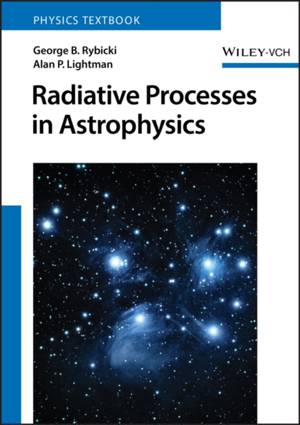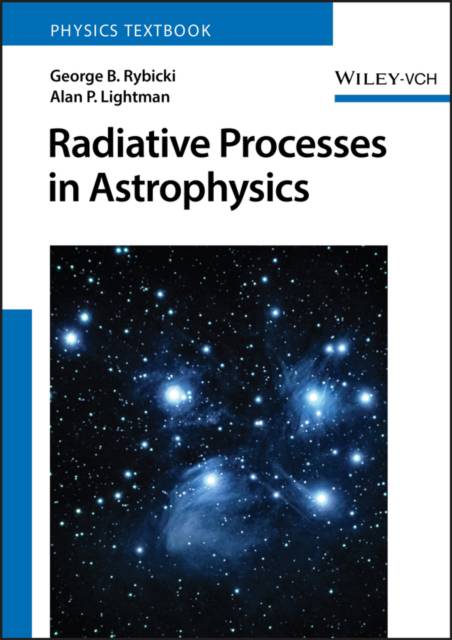
- Afhalen na 1 uur in een winkel met voorraad
- Gratis thuislevering in België vanaf € 30
- Ruim aanbod met 7 miljoen producten
- Afhalen na 1 uur in een winkel met voorraad
- Gratis thuislevering in België vanaf € 30
- Ruim aanbod met 7 miljoen producten
Zoeken
€ 192,95
+ 385 punten
Uitvoering
Omschrijving
Radiative Processes in Astrophysics: This clear, straightforward, and fundamental introduction is designed to present-from a physicist's point of view-radiation processes and their applications to astrophysical phenomena and space science. It covers such topics as radiative transfer theory, relativistic covariance and kinematics, bremsstrahlung radiation, synchrotron radiation, Compton scattering, some plasma effects, and radiative transitions in atoms. Discussion begins with first principles, physically motivating and deriving all results rather than merely presenting finished formulae. However, a reasonably good physics background (introductory quantum mechanics, intermediate electromagnetic theory, special relativity, and some statistical mechanics) is required. Much of this prerequisite material is provided by brief reviews, making the book a self-contained reference for workers in the field as well as the ideal text for senior or first-year graduate students of astronomy, astrophysics, and related physics courses. Radiative Processes in Astrophysics also contains about 75 problems, with solutions, illustrating applications of the material and methods for calculating results. This important and integral section emphasizes physical intuition by presenting important results that are used throughout the main text; it is here that most of the practical astrophysical applications become apparent.
Specificaties
Betrokkenen
- Auteur(s):
- Uitgeverij:
Inhoud
- Aantal bladzijden:
- 400
- Taal:
- Engels
Eigenschappen
- Productcode (EAN):
- 9780471827597
- Verschijningsdatum:
- 8/01/1991
- Uitvoering:
- Paperback
- Formaat:
- Trade paperback (VS)
- Afmetingen:
- 171 mm x 241 mm
- Gewicht:
- 757 g

Alleen bij Standaard Boekhandel
+ 385 punten op je klantenkaart van Standaard Boekhandel
Beoordelingen
We publiceren alleen reviews die voldoen aan de voorwaarden voor reviews. Bekijk onze voorwaarden voor reviews.











